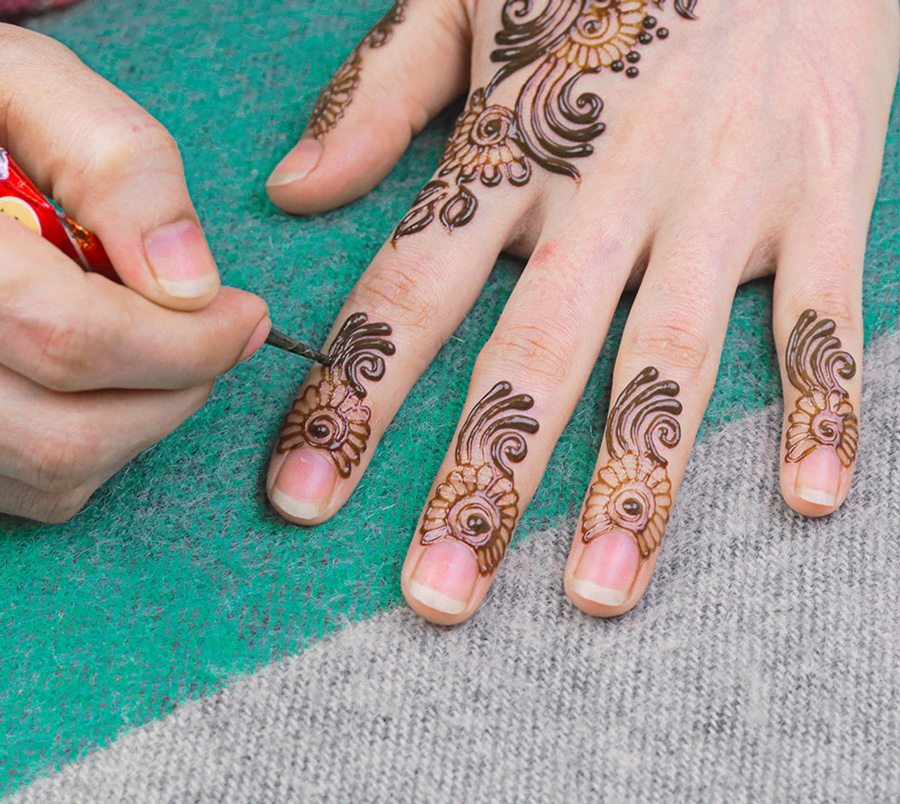Henna Tattoos: Everything You Need to Know Before Getting Henna Tattoos
Henna's history can be traced back thousands of years, with roots firmly planted in ancient civilizations. The use of henna for body art is believed to have originated in the Middle East, particularly in regions like Egypt and the Arabian Peninsula. Evidence suggests that the ancient Egyptians utilized henna not only for body adornment but also for its cooling properties in the hot climate.
What is a Henna Tattoo?
Henna tattoos, also known as Mehndi, have been adding a touch of flair to folks' skin for centuries. It's like wearable art that tells a story without using words. Picture this: intricate patterns adorning hands, wrists, and ankles, telling a tale without uttering a word. Welcome to the enchanting world of henna tattoos, where art meets tradition in a dance of temporary beauty.
What is Henna?
Henna, scientifically known as Lawsonia inermis, is a flowering plant with leaves that hold the secret to this mesmerizing art form. Native to tropical and subtropical regions, the plant has been a cultural cornerstone for centuries, revered for its natural dyeing properties.
1. The Dance of Application: A henna tattoo is not your run-of-the-mill ink job. It's a dance between an artist and your skin, a delicate application of henna paste using a cone. The artist's hands glide gracefully, leaving behind intricate designs that range from swirling patterns to symbolic motifs. The artist, armed with a cone filled with henna, glides over your skin, leaving behind trails of intricate patterns. it's a conversation starter, a window into traditions and cultures.
2. The Patience Game: Before you go all in, let's delve into the nitty-gritty of henna. Once the henna is applied, it's time to play the waiting game. But here's the kicker - henna has a secret agenda. As the paste dries and flakes away, it leaves behind a stain that deepens over time. It's like a plot twist in a novel; you think it's done, but the real magic happens later. It's not just art on the surface; it's a chemical reaction between the henna molecules and the proteins in your skin. think of it as a weekend fling with body art. The paste is made from crushed henna leaves, mixed with a dash of lemon juice and a pinch of sugar. The result? A gooey concoction ready to make its mark on your skin.
3. Cultural Significance Beyond the aesthetics, henna tattoos carry cultural significance. In many cultures, henna is used to celebrate weddings, festivals, and other significant events. The designs often hold symbolic meanings, weaving stories and traditions into the fabric of the artwork.
4. Safety First
Now, you might be wondering, is it safe? Fear not! Traditional henna, made from crushed henna leaves, is generally safe for the skin. However, be cautious of "black henna," which may contain harmful additives. Always opt for the natural route to ensure a safe and enjoyable experience.
*The Government of Canada includes a warning that "tattoos can cause severe allergic reactions" on their website. Please check link below to Learn more.
5. A Canvas of Expression:
Whether you're embracing henna for its cultural ties, symbolic allure, or just the sheer joy of temporary body art, a henna tattoo is a canvas of expression. It's a nod to tradition, a celebration of creativity, and a testament to the beauty that can be found in the transient.
So, the next time you spot those swirling patterns on someone's skin, know that it's not just henna—it's a story, a tradition, and a momentary work of art etched in time.
Now, picture this: You're at a summer festival, the sun's shining, and you spot someone with intricate henna designs on their hands. It's like Mother Nature herself decided to sprinkle a bit of magic. These tattoos, made from the henna plant, aren't just your regular ink; they're a temporary masterpiece, a living canvas for self-expression.
And the best part? No needles, no pain. It's all about embracing the beauty without the "ouch." Henna's got your back – or your hand, in this case.
So, whether you're looking to spice up your weekend or add a cultural twist to your style, henna tattoos are the way to go. It's not just ink on skin; it's a statement, a temporary tattoo that leaves a lasting impression. So, what do you say? Ready to dip your toes (or fingers) into the world of henna? The adventure awaits!
How Long Does a Henna Tattoo Last?
.
1. The First Act: Immediate Impact In the initial hours after application, your henna tattoo is a showstopper. The color is vibrant, the patterns are intricate, and you're turning heads wherever you go. It's like the opening act of a theatrical performance, grabbing attention and making a statement.
2. The Unveiling: Peeling Away the Layers As time passes, the henna paste begins to flake away. It's like the second act of our performance, where the initial drama makes way for a subtle unveiling. You might be tempted to speed up the process and peel off the dry henna, but patience is key here. Let it shed naturally for the best results.
3. The Climax: Stain Development Here comes the climax. As the henna paste bids its final adieu, what remains is a stained imprint on your skin. This stain will continue to deepen over the next 24 to 48 hours, reaching its peak intensity. It's like the plot twist that leaves a lasting impression.
4. The Grand Finale: How Long Does it Last? Now, the burning question – how long does a henna tattoo last? Well, it's not forever, but it's not a mere flash in the pan either. On average, you can expect your henna tattoo to stick around for one to three weeks. Factors like how well you take care of it, the location on your body, and your skin type can influence its longevity.
5. The Encore: Caring for Your Henna Tattoo To ensure an extended encore, treat your henna tattoo with care. Avoid excessive water exposure, as swimming and frequent washing can bid it farewell sooner than you'd like. Moisturizing regularly and keeping it away from harsh chemicals will also help preserve the vibrant hues.
Is Henna Good for skin?
Yes, it's got some skin-friendly qualities up its sleeve.
1. The Natural Touch: One of the perks of henna is its natural origin. Made from the leaves of the henna plant (Lawsonia inermis), this temporary tattoo companion skips the synthetic chemicals often found in other body art products. It's like giving your skin a break from the chemical hustle and bustle.
2. A Cooling Embrace: Henna has a secret weapon – it's cool, literally. When applied to the skin, henna has a cooling effect, making it a soothing experience. It's like a refreshing breeze for your skin, especially in warmer climes.
3. Skin Stain, Not Strain: Unlike some harsh chemicals found in certain dyes, henna is generally gentle on the skin. The staining process involves a chemical reaction with the proteins in your skin, but it's a dance of colors that most people's skin tolerates well.
4. Cultural Seal of Approval: For centuries, henna has been a staple in various cultures for body art and rituals. Its use in celebrations like weddings and festivals speaks volumes about its cultural acceptance and the positive relationship it has with the skin.
5. A Natural Exfoliant: As the henna paste dries and flakes away, it acts as a natural exfoliant, gently sloughing off dead skin cells. It's like a mini spa session, leaving your skin feeling refreshed and renewed.
6. Henna SOS – Not Just Skin Deep: Beyond aesthetics, henna has been known to have medicinal properties in traditional medicine. It's been used for its cooling and anti-inflammatory effects, providing relief for conditions like headaches and skin irritations.
7. A Word of Caution: While natural henna is generally safe for most people, it's essential to be cautious about "black henna" products. Some of these may contain harmful additives like para-phenylenediamine (PPD), which can cause adverse reactions. Stick to the natural route, and your skin will likely thank you.

